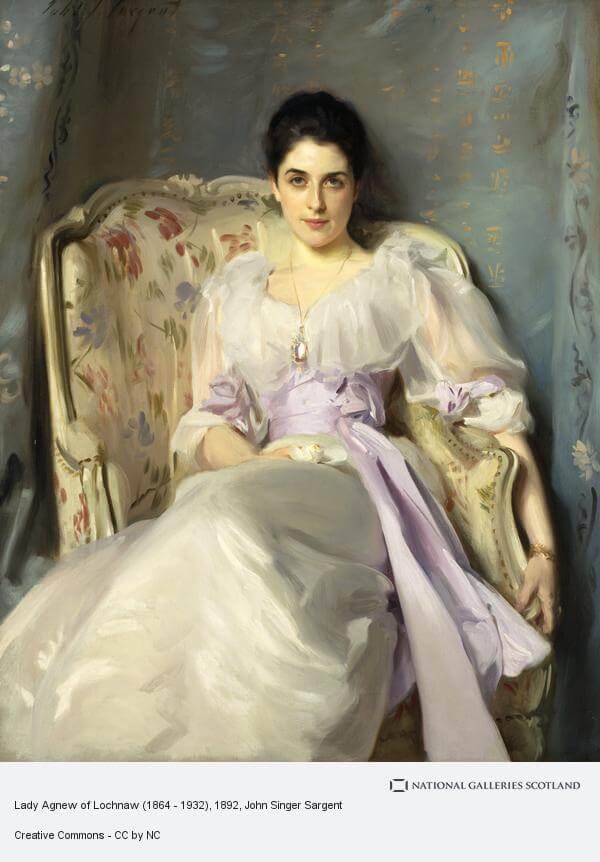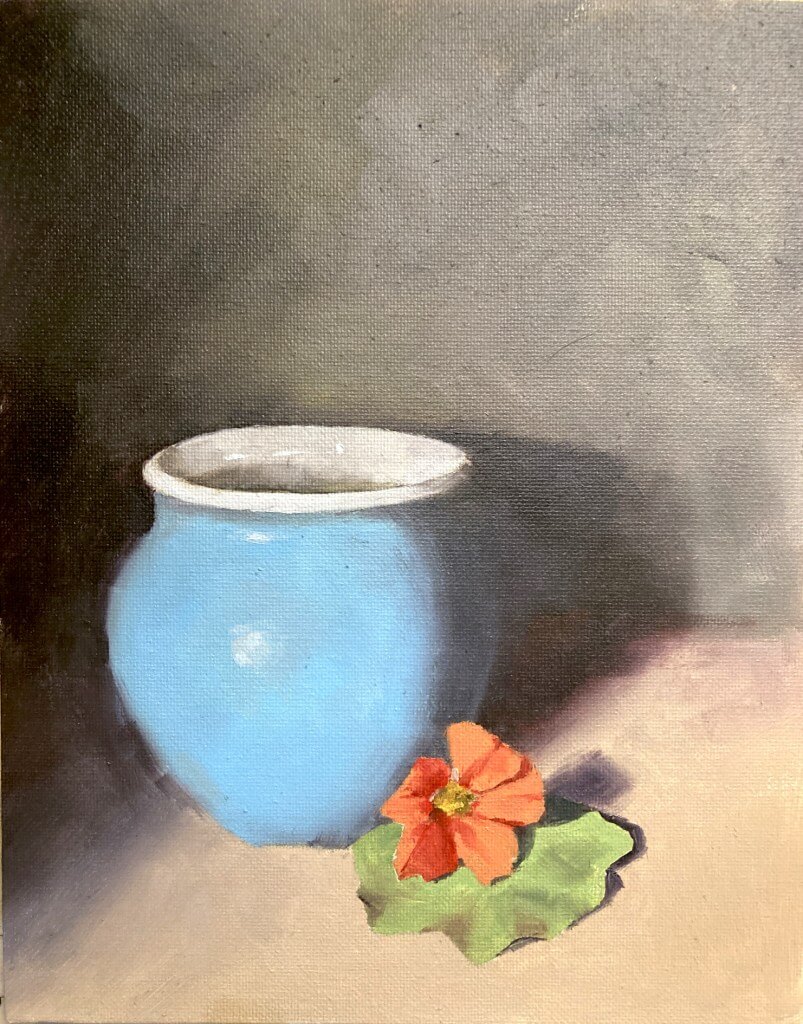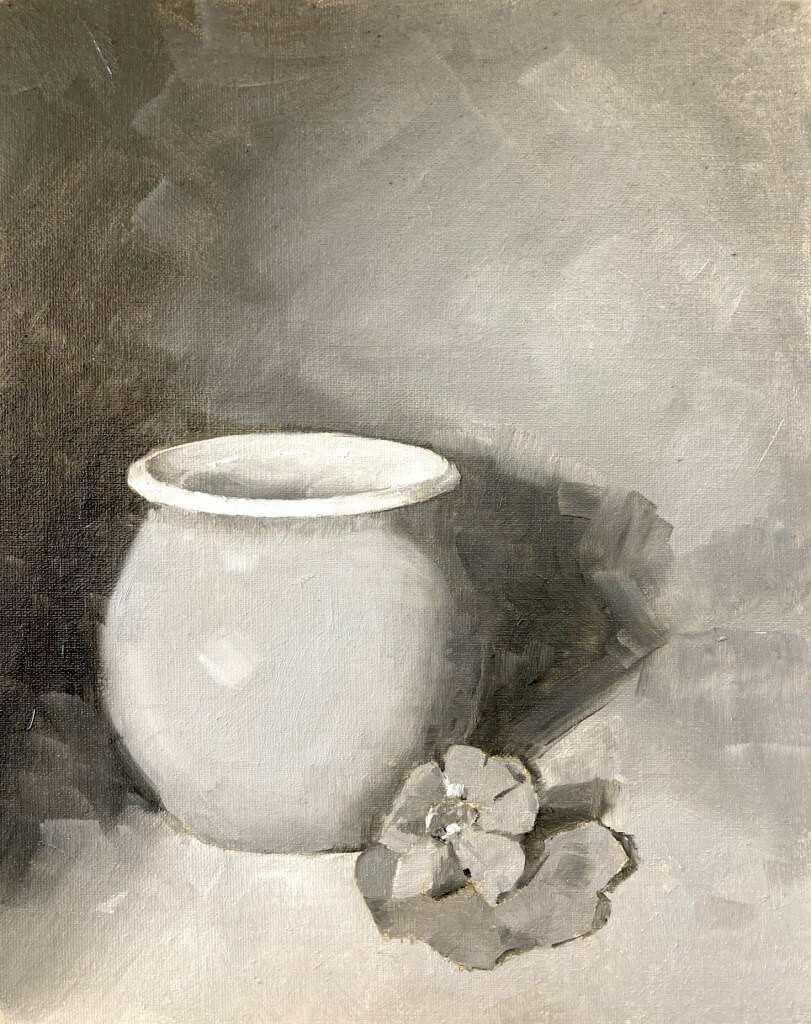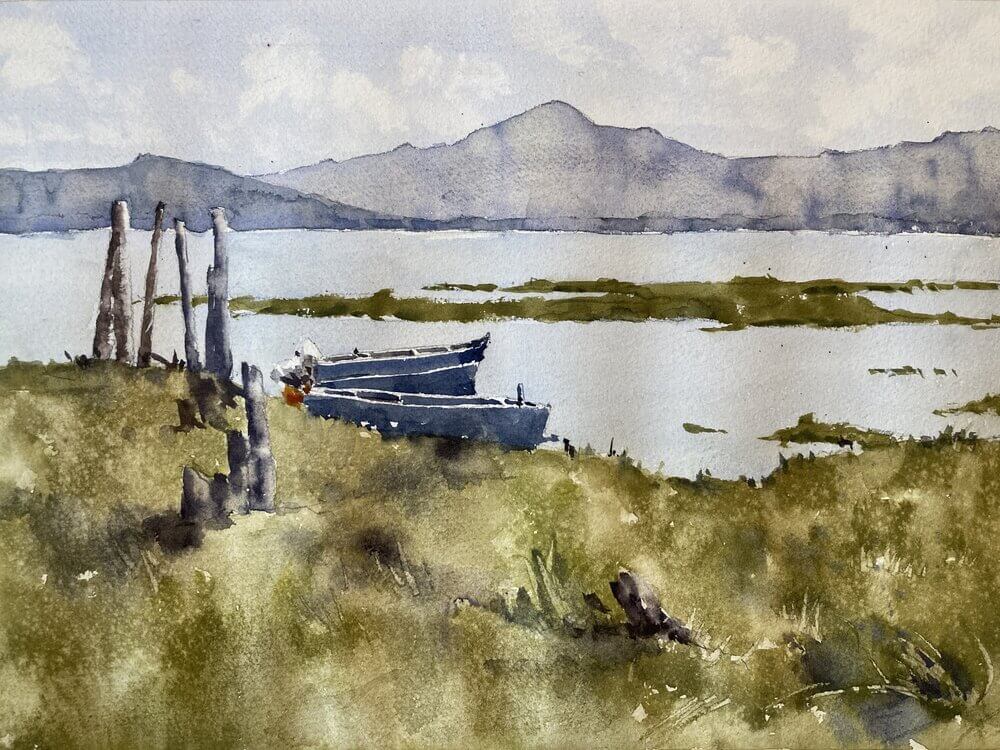First Attempt at Sargent Watercolor Portrait
This portrait watercolor study is from an amazing Sargent painting of Lady Agnew and can be seen at the Scottish National Gallery. Well if you’re ever feeling over confident about your painting abilities try doing a Sargent watercolor portrait study. It definitely cut me down to size. I wasn’t attempting a likeness (and definitely didn’t achieve that) but wanted to see how I could do with the skin tones. All in all not a bad attempt but will definitely need more work before next week.
It’s quite surprising how low chroma a lot of the colors are in this. I had to be very careful to tone everything down a little to get anywhere near the right colors. Even the blue in the background has quite a lot of black in it. And the folds in the dress are a *very* low chroma purple which is almost indistinguishable from gray when it’s on the palette.
Second Attempt at Lady Agnew Portrait copy
Trying again with this Lady Agnew Sargent watercolor study. Smaller this time which may have been a bad idea as I had to break out the smaller brushes. Better take on the face shape but still a way to go. The likeness is still nowhere near of course but, at least, this one does look like an actual human being. I got more form into the eye socket area and more contrast where it needed it. In both paintings I rather liked the hair. Nice and dark but with subtle value changes to show the sheen of the waves.
Next Steps
My final goal with these studies is to do an oil master copy at a much larger size. As it stands I need to do some more work before attempting this. The main thing is to get more of a likeness and for that I’ll need to brush up on my face drawing. Some careful pencil studies will likely be the order of the day.











